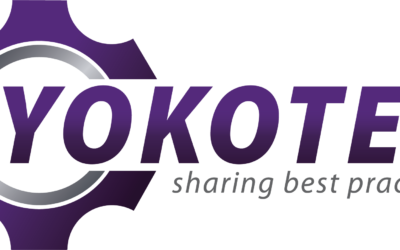Lean Leader Circle vs. Deming Cycle
How does the Lean Leader Circle OPDCSC differ from the PDCA Deming Cycle?
Surely everyone has heard of what the Deming Cycle or Circle is. The PDCA (plan-do-check-act/adjust) cycle is a four-stage interactive methodology that is often used in organizations to continuously improve processes, products or services. But have you heard of the Lean Circle? Or do you use OPDCSC Observe – Plan – Do – Check – Standardise – Celebrate) and as a leader you work by observing – planning – performing – testing – standardizing – celebrating?
How does the Lean Leader Circle OPDCSC differ from the PDCA Deming Circle? Using both tools: A Deming Circle and a Lean Leader Circle means working according to the principles of continuous improvement. You could say that the Lean Leader Circle is ‘tailored’ for a leader, because it contains many elements that somehow remind the leader of what to do to be even more effective, to consolidate new patterns, and to continuously increase employee involvement.
The OPDCSC Leader Circle combines the elements of continuous improvement contained in both the Toyota Production System – TPS and Toyota Way – where standardization and celebration are of utmost importance. So by using the OPDCSC Leader Circle in our day-to-day operations and using the A3 or One Point Lessons approach, we make sure that as a leader in continuous improvement we take the right approach to planning, effectively correct our actions, and after the final implementation, we ensure that we implement and maintain standards and strengthen employee involvement.
OPDCSC Leader’s Circle and building independence of employees.
Let’s think about what happens when we use a tool like the PDCA Deming Circle. Using this tool allows the leader to complete tasks efficiently. But as leaders, do we develop our employees in a culture of continuous improvement? Actually, we are rather traditional leaders who use lean tools.
According to Toyota’s philosophy, a lean leader is someone who, above all, builds the independence and commitment of employees, because his key task is to develop other employees and not just ‘delivering results’ by the managed team. As a result, extraordinary results can be expected.
Quite often, even in leading organizations, referred to as “World Class Manufacturing”, employee satisfaction surveys are unsatisfactory. This is because, among other things, these companies use lean tools very effectively to optimize and achieve good results, and this is their primary goal. The use of the OPDCSC Leader Circle, and not only the PDCA Deming Circle, gives the possibility of even better and more lasting effects over time.

How to use the Lean Leader Circle PDCSC ?
A few important steps.
Step 1 – Observe
Observing the activity is extremely important before we move on to the planning phase. First we need to define what needs to be changed or improved. Observation by the leader means he must go to Gemba – recognize ‘crime scenes’ and do a VCB exercise (Visual-Catch-Ball) and visualize the situation. A visit to Gemba may lead to a task being written on the board to which the employee will be assigned: it means that we will have information about what needs to be done, by whom, when, and finally the status that will be followed. Therefore, we will act in accordance with the Deming Circle. Using the VCB tool often leads to:
- launching a project leading to the solution of the problem with the
A3 method; - One point lesson;
- or SMED.
Step 2 – Plan
Based on our observations we can start planning the necessary change. In order to plan and prepare the change well, we ‘delegate’ the task to the employee, which, in accordance with Toyota’s philosophy, means that we ‘delegate’ the task to the employee who agrees to perform it. The way we prepare and carry out the task determines whether or not the employee then feels the responsibility of the subject. This in turn affects the employee’s involvement or lack of it.
Step 3 and 4 – Do and Check
Many of you are certainly going through these phases. I will add that in the case of Toyota, ‘checking’ requires a set of numerous leadership competences, including: giving and receiving feedback, effective communication, mendomi (i.e. the philosophy of ‘caring for the employee’) or hansei (i.e. self-reflection on the way to improvement and perfection). You will find more about these leadership competencies in my previous articles. I will return to these topics in the near future.
Step 5 – 5 x Why
If the ‘checking’ phase does not go well and it turns out that not everything is going according to plan, the Deming Circle will somehow take us to the next stage, i.e. to ‘act/adjust’. In 95% of companies this is the moment when the visualization on the board or A3 does not work, or is not filled in/used properly. Employees either start working with the new Deming Circle again, or leave the previous one with the three quarters filled in and start to solve the problem. In this situation the Lean Leader Circle OPDCSC is more accurate and shows what exactly should happen.
If we have completed the task (step ‘do’) and at the check stage (step ‘check’) we have not achieved what we assumed (step ‘plan’) we should move on to using the tool 5 x Why. After passing the cycle of questions we will come to the causes and we can plan a new task (step ‘plan’), then perform it (step ‘do’) and check (step ‘check’). If, in this situation, it turns out that we have achieved the goal, i.e. the task was completed as planned, we can move on to the next step, i.e. standardize (step ‘standardize’).
Step 6 – Standardize
The aim at this stage is to introduce new standards, procedures, visualizations, poke-yoke, training, all in order to consolidate new solutions and behaviors and to prevent old habits from returning. Standardization in processes is another big topic, which I will return to in the following articles.
Finally, at the end of the cycle in the Leader’s Circle we come to my favorite stage of celebration, which we often forget about for very different reasons: from the leaders’ underestimation of this stage to the lack of time.
Step 7 – Celebration
Organisations that do not celebrate, fully underestimate their employees. Celebrating success, which undoubtedly is the implementation of the planned task, is extremely important in building the ‘big one’ (great) company with committed and independent employees. The usual gestures such as a handshake, thanking for the effort/contribution, saying ‘well done/good work’ are extremely important in this culture and being a lean leader. You can find more about celebrating and standardizing lean (LSW Leader Standard Work) in my articles.



